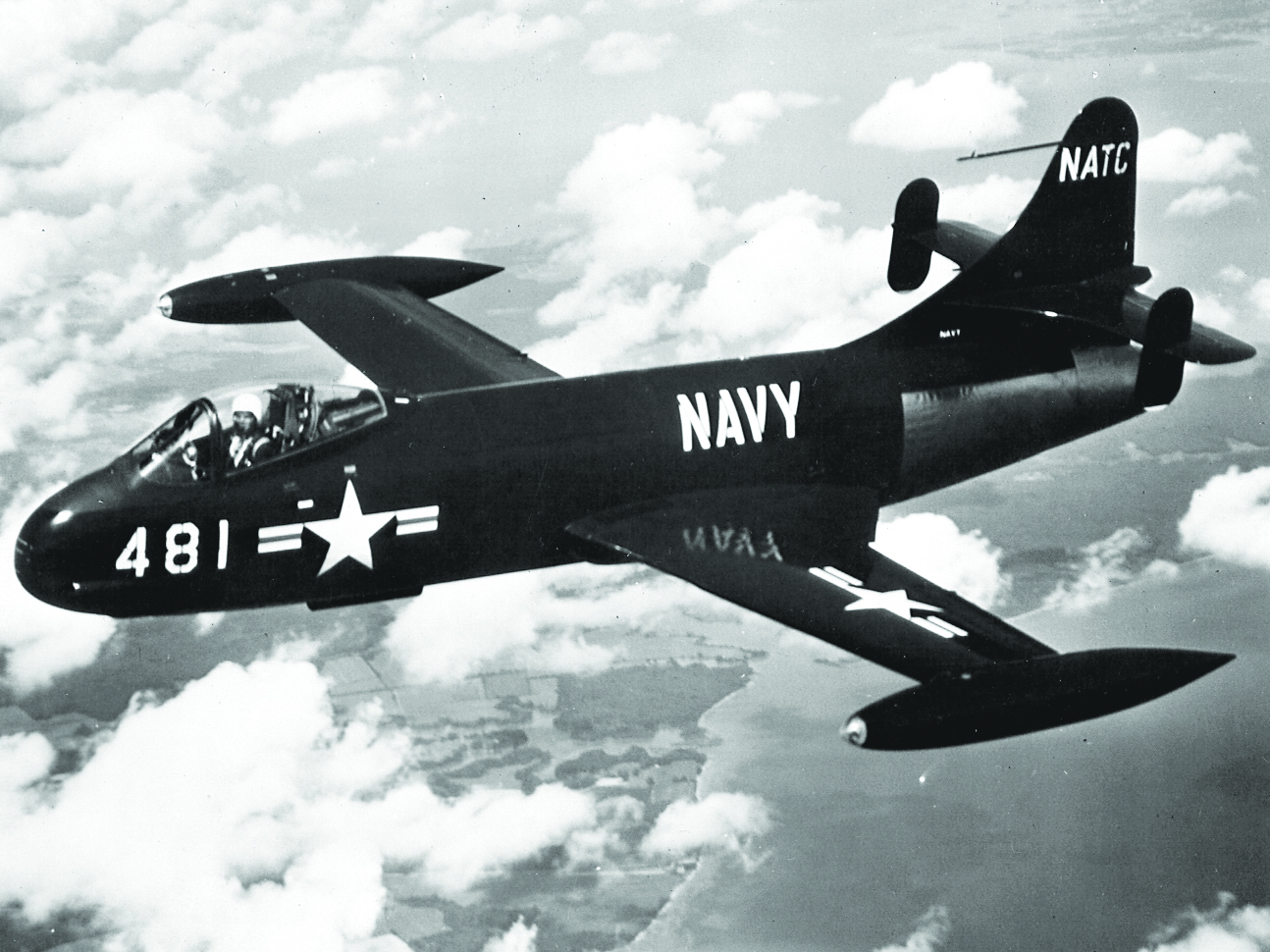Can you identify this early U.S. Navy jet fighter? (click the arrow for the answer)
Vought F6U-1 Pirate
As the United States began to work in earnest on the jet engine technology provided by its British ally during World War II, Chance Vought tried to follow up its successful F4U Corsair by designing a jet fighter capable of operating off aircraft carriers. Work was still underway on its V-340 project when McDonnell’s FH Phantom demonstrated that capability, but Vought persisted in hopes that its design would ultimately prove superior. What it ultimately produced was promising enough for the U.S. Navy to authorize three prototypes on December 29, 1944. The XF6U-1 Pirate, as it was designated, first flew on October 2, 1946. In 1947 the Navy ordered 30, of which one, the XF6U-1P, was equipped for photoreconnaissance.
The Pirate had a few unusual features in its treasure chest. Its relatively lightweight Westinghouse J-34-NE-30 engine was the first in any navy fighter to have an afterburner, which produced 4,225 pounds of thrust, a maximum speed of 596 mph and an 8,000-feet-per-minute rate of climb. Maximum range with wingtip auxiliary tanks was 1,040 nautical miles and ceiling was 46,260 feet. In another attempt to reduce weight, the F6U-1 was skinned in “metalite,” consisting of two thin sheets of high-strength aluminum bonded to a balsa wood core. Perhaps recalling how the F4U-1 had been handicapped in carrier operations by its poor forward visibility, Vought installed the F6U-1’s air intakes in the wing roots rather than in the forward fuselage, while positioning the pilot and his projected armament of four 20mm M3 cannons up front.
One of the most distinctive features of the Pirate resulted from initial test reports of poor lateral stability. Vought tried five different tail arrangements before the design was finalized, with two small vertical stabilizers, or finlets, perched at the front of the horizontal tailplanes to supplement the main stabilizer and rudder.
For all its virtues, however, the Pirate was doomed to a short voyage. Prodded by the Cold War, significant strides in jet development were made during the 1940s. Although it flew well, the F6U-1’s performance could not compete with that of the North American FJ-1 Fury and the Grumman F9F-2 Panther, let alone the sweptwing versions that would leave all the straight-wing jets in the sea spray. The F6U-1s spent most of their time with testing squadron VX-3 before the Navy ended the Pirate program for good in 1950. By then, Vought had sailed on with a more radical contender for the carrier decks: the F7U Cutlass.

